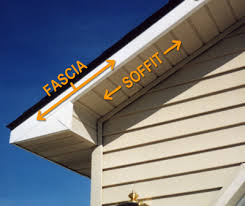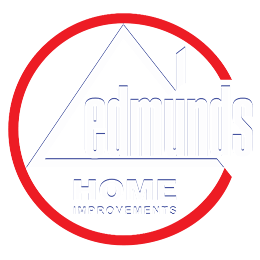Soffit and fascia are similar to eavestrough in that, although they can both add a unique aesthetic accent to your home, for the most part they go unnoticed. That is, until they cause you problems.
Your soffit and fascia play an important role in the health of your roof and attic. For starters, your soffit is a big part of what allows your attic to ventilate. Many think that having the right amount of roof vents is enough to ventilate an attic, but it’s not; if you don’t have perforated soffits every 4-5 feet, you won’t have enough air circulating through your attic. This can cause a number of problems:
Soffit protects your home’s rafters from the elements. Without it, they can grow mould and rot. Replacing rafter beams typically costs thousands more than replacing or fixing your soffits.
The same ventilation issues that can cause your rafters to develop mould can also affect your attic. Mould in your attic can go undetected for years. If not discovered and removed promptly (an expensive endeavor it in itself), mould can turn into rot, resulting in your roof sheathing needing to be replaced.
Proper soffit ventilation doesn’t just affect your attic; it affects the air circulation of your entire home. If your attic is sealed tight, it will retain heat, causing your utility bill to skyrocket in hotter months. The same poor ventilation will also cause moisture to build up in cooler months, leading to mould in your attic, which, as stated above, is expensive to remove and can eventually cause rot.
The good news is that you need never experience any of these issues. Follow these two rules when having new soffits installed:
Make sure that at least one out of every four soffit panels are vented. At Edmunds, we install one vented panel for every three panels to ensure maximum ventilation.
When choosing a material for your soffits, choose heavy gauge aluminum. It may cost a little more than lighter gauge aluminum, but it will be far more durable in the face of high winds or animals trying to build a home in your attic.
One of the secondary benefits of aluminum soffit is that it comes in a number of styles and any colour you can think of. When combined and coordinated with your eavestrough, window capping, and roof, new soffit and fascia can act as the perfect aesthetic complement to the rest of your home.
Can You Replace Soffit without Removing Fascia?
Yes, you can replace the soffit without removing the fascia in some cases, but it depends on the construction of your roof and how the soffit and fascia are attached. In many homes, the fascia board and soffit are connected but not necessarily dependent on each other structurally.
To replace the soffit, you usually:
- Remove the old soffit material carefully by detaching it from any nails or screws.
- Slide the new soffit panels into place under the fascia board.
- Secure the new soffit to the underside of the roof’s overhang.
However, if the fascia board is damaged or obstructs the process, it may be easier to replace both at the same time. Also, replacing just the soffit without checking the fascia can be less effective if the fascia has underlying issues like rot or wear.
Don’t Forget About Your Fascia
Fascia is usually installed with soffits. Aluminum fascia stops water from rotting the wood boards that support your eavestrough. If these boards rot, your eavestrough may lose its slope and stop working, or fall off altogether. Rotten fascia boards also provide easy access to your attic for critters such as raccoons and squirrels.
For more information or to get a free estimate on soffit and fascia repair and replacement, call Edmunds at 905-472-0276 today.




